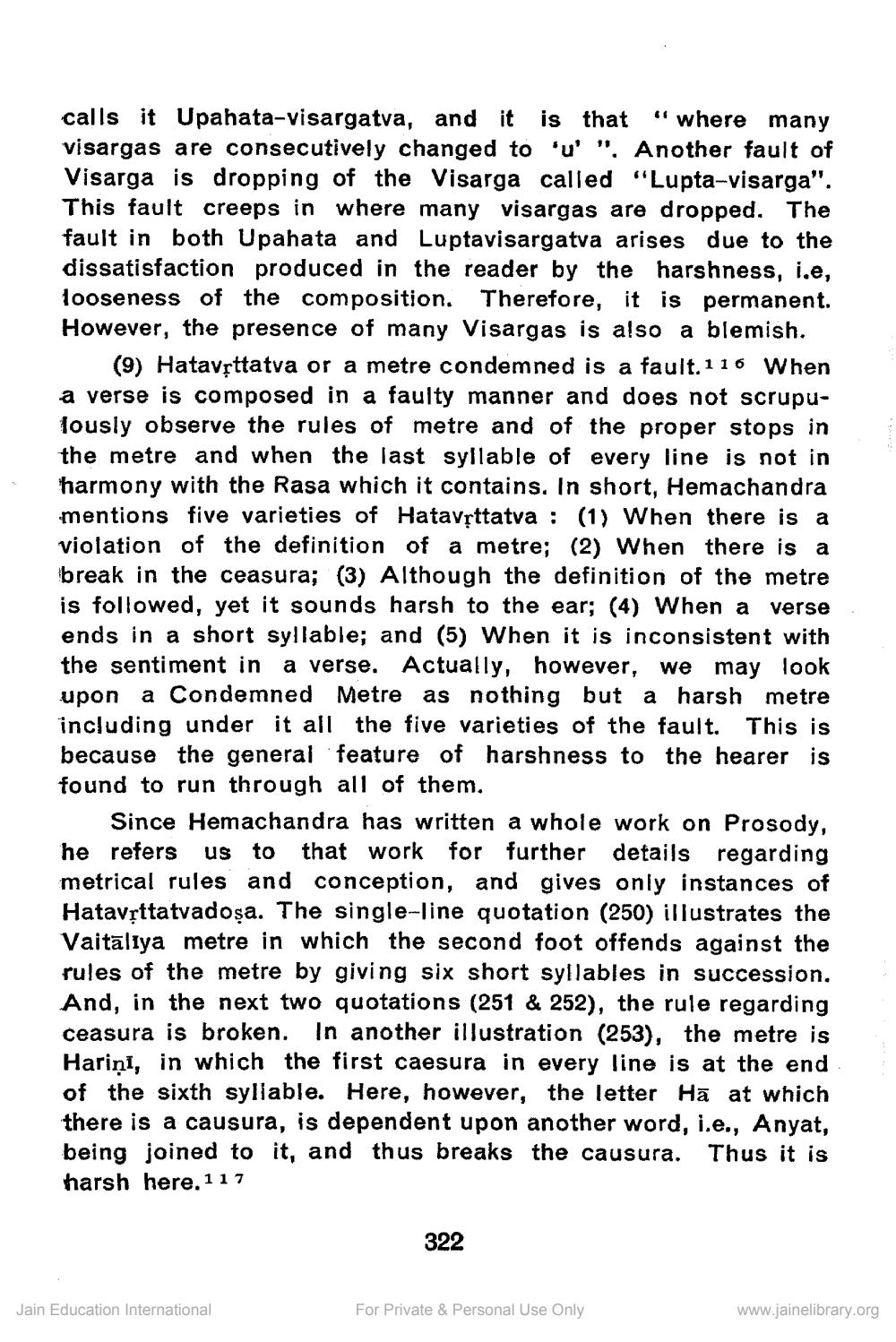________________
"where many
calls it Upahata-visargatva, and it is that
visargas are consecutively changed to 'u'". Another fault of Visarga is dropping of the Visarga called "Lupta-visarga". This fault creeps in where many visargas are dropped. The fault in both Upahata and Luptavisargatva arises due to the dissatisfaction produced in the reader by the harshness, i.e, looseness of the composition. Therefore, it is permanent. However, the presence of many Visargas is also a blemish.
(9) Hatavṛttatva or a metre condemned is a fault. 116 When a verse is composed in a faulty manner and does not scrupulously observe the rules of metre and of the proper stops in the metre and when the last syllable of every line is not in harmony with the Rasa which it contains. In short, Hemachandra mentions five varieties of Hatavṛttatva: (1) When there is a violation of the definition of a metre; (2) When there is a break in the ceasura; (3) Although the definition of the metre is followed, yet it sounds harsh to the ear; (4) When a verse ends in a short syllable; and (5) When it is inconsistent with the sentiment in a verse. Actually, however, we may look upon a Condemned Metre as nothing but a harsh metre including under it all the five varieties of the fault. This is because the general feature of harshness to the hearer is found to run through all of them.
Since Hemachandra has written a whole work on Prosody, he refers us to that work for further details regarding metrical rules and conception, and gives only instances of Hatavṛttatvadoșa. The single-line quotation (250) illustrates the Vaitāliya metre in which the second foot offends against the rules of the metre by giving six short syllables in succession. And, in the next two quotations (251 & 252), the rule regarding ceasura is broken. In another illustration (253), the metre is Hariņi, in which the first caesura in every line is at the end of the sixth syllable. Here, however, the letter Hā at which there is a causura, is dependent upon another word, i.e., Anyat, being joined to it, and thus breaks the causura. Thus it is harsh here.117
Jain Education International
322
For Private & Personal Use Only
www.jainelibrary.org




